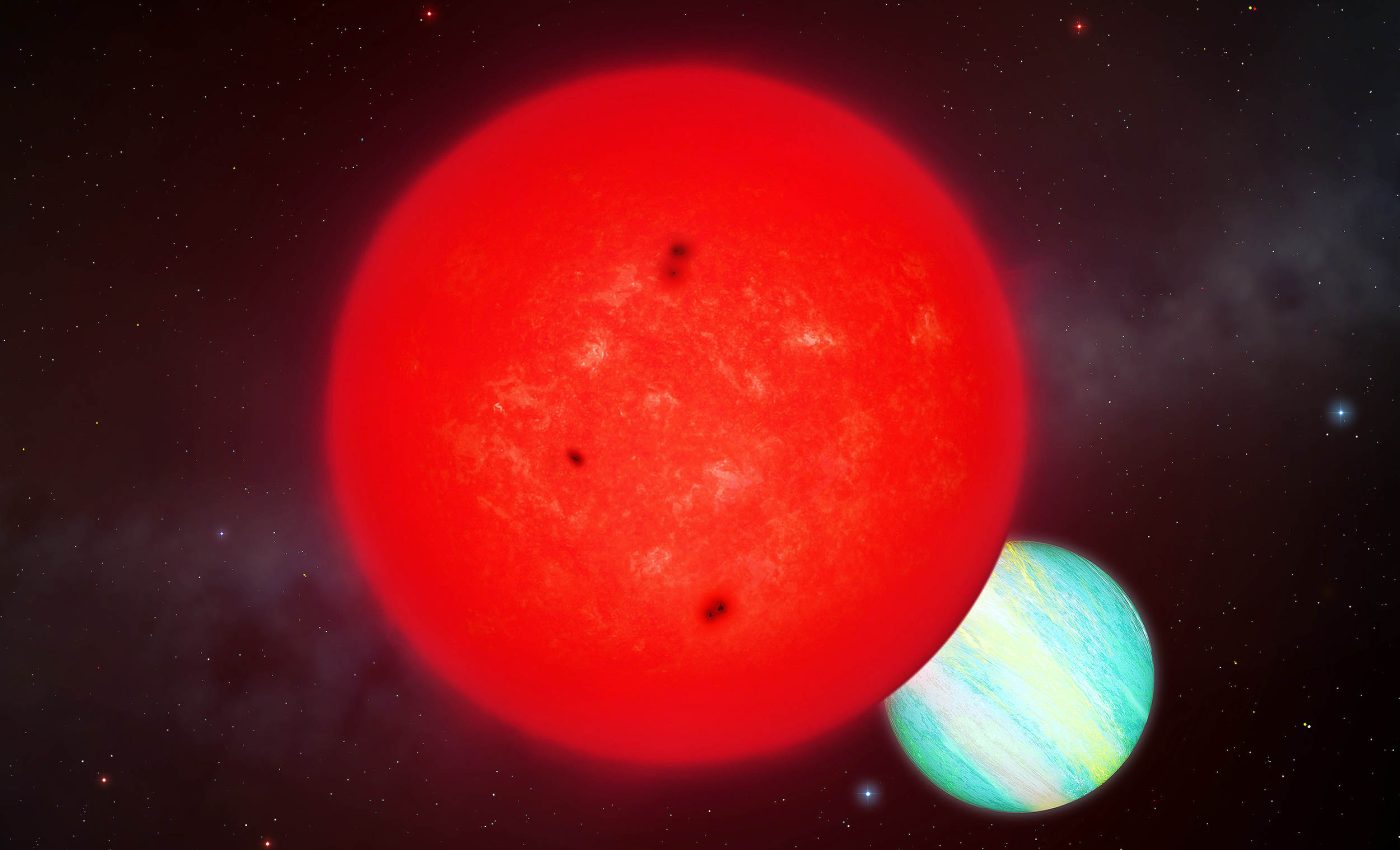
Astronomers discover a tiny star with a giant planet that should not exist
Astronomers have spotted a giant exoplanet, named TOI-6894b, that’s bigger than Saturn and circling a red dwarf star only one-fifth the mass of the Sun.
This finding rewrites expectations about where massive planets can form and hints that such worlds may be common around the smallest stars. The discovery emerged from a survey of Transiting Exoplanet Survey Satellite (TESS) data.
Tiny star hosts a giant TOI-6894b
TOI-6894 is a cool red dwarf that shines with far less light than the Sun. Yet its companion, TOI-6894b, is a puffed-up gas world whose radius exceeds Saturn’s while its mass is only half as large.
“I was very excited by this discovery. I originally searched through TESS observations of more than 91,000 low-mass red dwarf stars looking for giant planets,” said lead author Edward Bryant, an astronomer at University College London (UCL).
“Then, using observations taken with one of the world’s largest telescopes, ESO’s VLT, I discovered TOI-6894b, a giant planet transiting the lowest-mass star known to date to host such a planet.
“We did not expect planets like TOI-6894b to be able to form around stars this low-mass. This discovery will be a cornerstone for understanding the extremes of giant planet formation.”
Star and planet mismatch
The host star is 60 percent smaller than the next-tiniest star known to harbor a transiting gas giant. That fact alone forces astronomers to rethink estimates of planetary populations.
“Most stars in our galaxy are actually small stars exactly like this, with low masses and previously thought to not be able to host gas giant planets,” said co-author Daniel Bayliss, an astrophysicist at the University of Warwick.
“So, the fact that this star hosts a giant planet has big implications for the total number of giant planets in our Galaxy.”
TOI-6894b is a mystery
Standard core-accretion theory struggles to explain the new object. Low-mass stars should possess thin disks that cannot build hefty planetary cores before the gas disperses.
“It’s an intriguing discovery. We don’t really understand how a star with so little mass can form such a massive planet!” said co-author Vincent Van Eylen, an expert in exoplanets at UCL.
“This is one of the goals of the search for more exoplanets. By finding planetary systems different from our solar system, we can test our models and better understand how our own solar system formed.”
The team explored two alternate routes. “Given the mass of the planet TOI-6894b could have formed through an intermediate core-accretion process,” Bryant said.
Alternatively, the planet could have formed when a gravitationally unstable disc fragmented under its own gravity, leading gas and dust to collapse into a planet. However, neither scenario fits the present data perfectly, keeping the planet’s origin open.
Gas giant details emerge
TOI-6894b orbits at a distance that leaves its atmosphere chilly by exoplanet standards. The estimated equilibrium temperature is only 420 Kelvin.
“Based on the stellar irradiation of TOI-6894b, we expect the atmosphere is dominated by methane chemistry, which is exceedingly rare to identify,” said co-author Amaury Triaud, an astrophysicist at the University of Birmingham.
Temperatures could allow ammonia to be detected in an exoplanet atmosphere for the first time.
“TOI-6894b likely presents a benchmark exoplanet for the study of methane-dominated atmospheres and the best ‘laboratory’ to study a planetary atmosphere containing carbon, nitrogen, and oxygen outside the Solar System,” he said.
Such promise has already earned the planet a place in the James Webb Space Telescope (JWST) observing queue. Spectra next year may reveal the gas balance and cloud depth, shedding light on the planet’s formation.
TOI-6894b opens new star search lanes
“This system provides a new challenge for models of planet formation,” said co-author Andrés Jordán, an astrophysicist at the University Adolfo Ibáñez. “It offers a very interesting target for follow-up observations to characterize its atmosphere.”
“Our efforts have allowed us to contribute significantly to a better understanding of how often small stars can form giant planets, and we are providing prime targets for follow-up with space-based platforms.”
Every sentence of data from TOI-6894b will sharpen those statistics. If many dim red dwarfs host similar planets, the Milky Way could have more gas giants than expected.
For now, the new world stands as a reminder that planet formation remains flexible – and sometimes spectacularly bold – no matter how modest the parent star.
—–
The study was led by researchers at the University of Warwick, University College London’s (UCL) Mullard Space Science Laboratory, the University of Birmingham, and other partners.
The study is published in the journal Nature Astronomy.
Image credit: University of Warwick/Mark Garlick
—–
Like what you read? Subscribe to our newsletter for engaging articles, exclusive content, and the latest updates.
Check us out on EarthSnap, a free app brought to you by Eric Ralls and Earth.com.
—–













